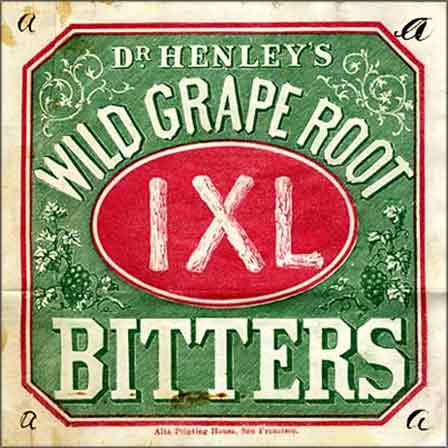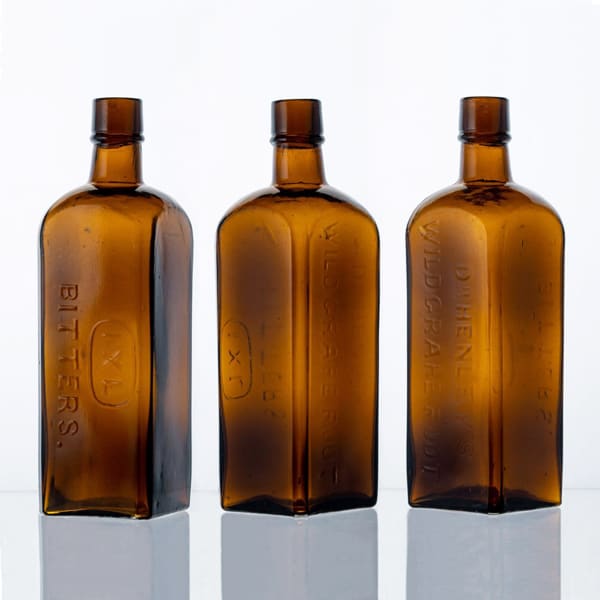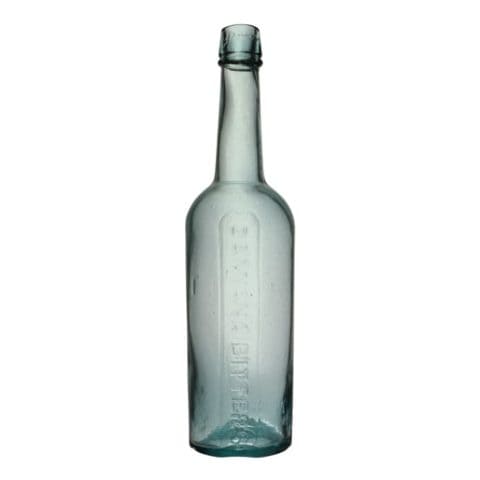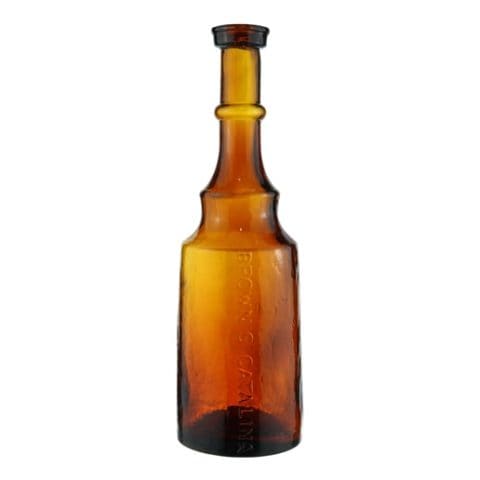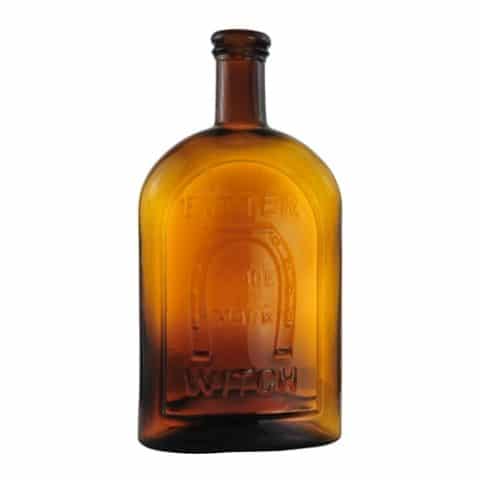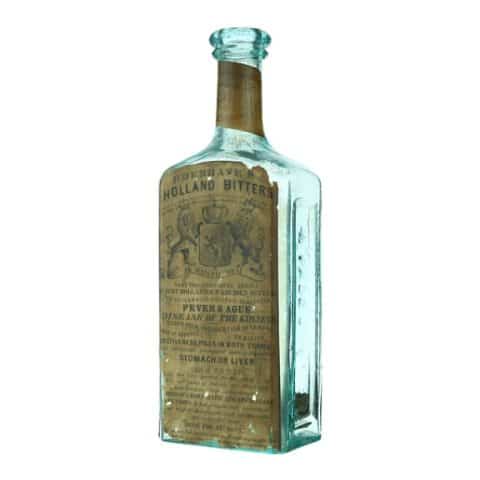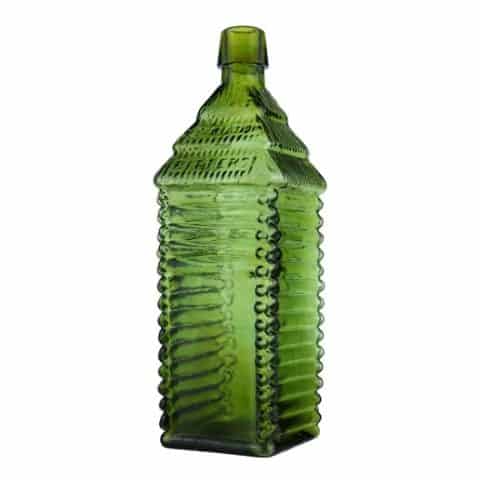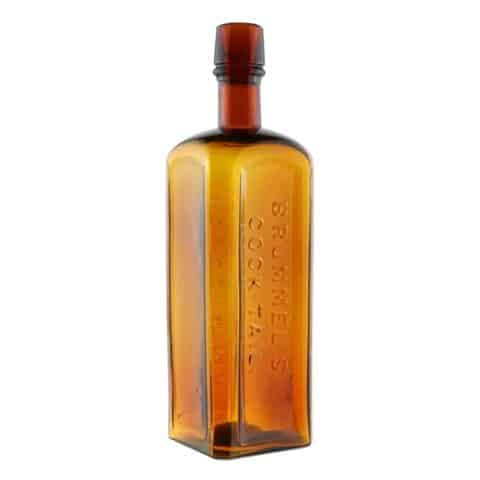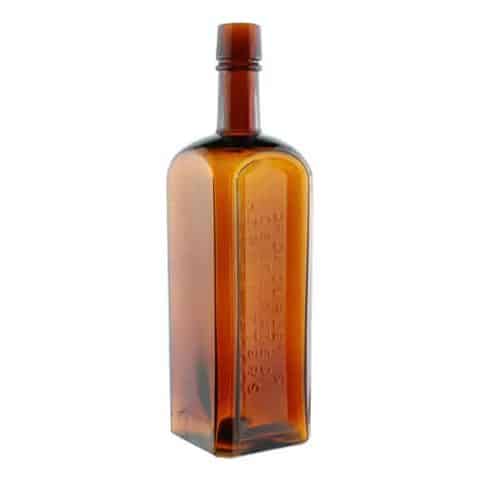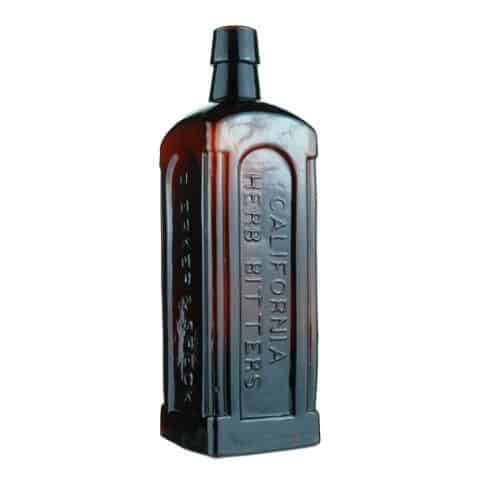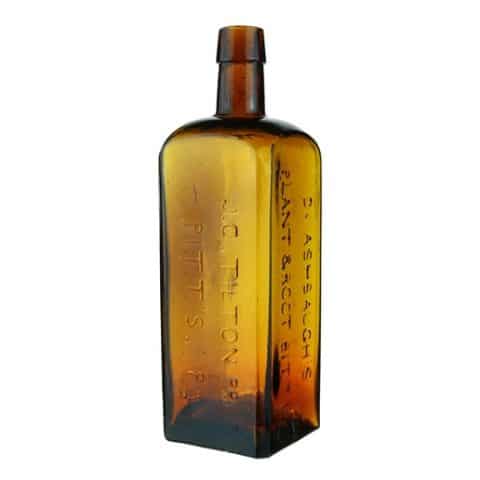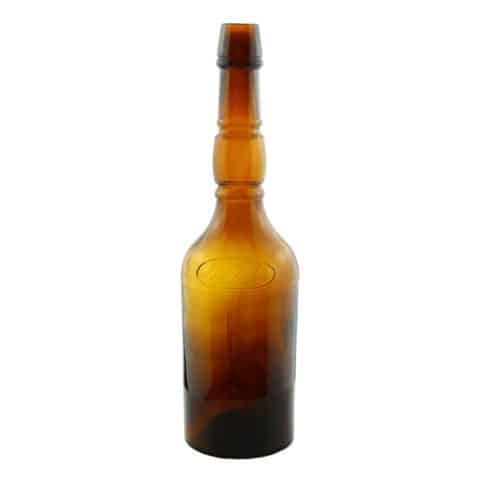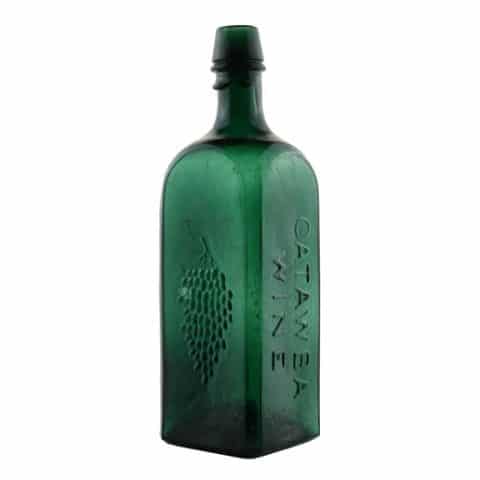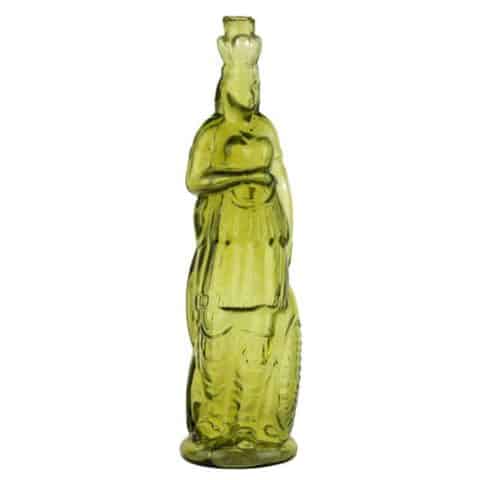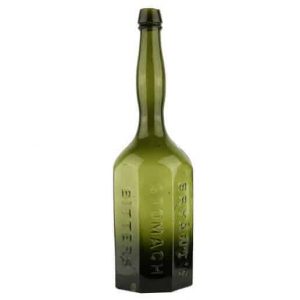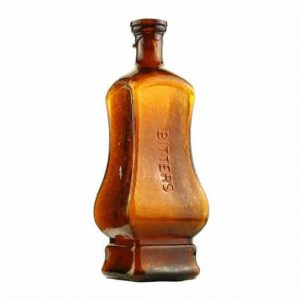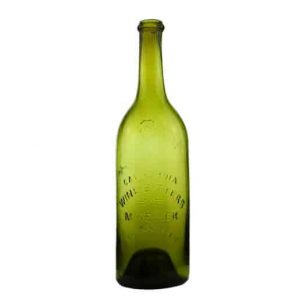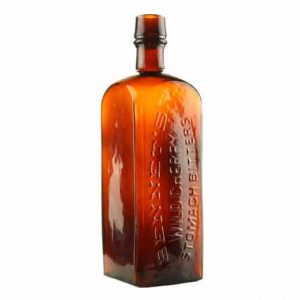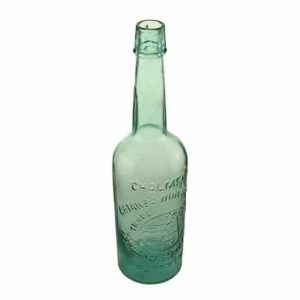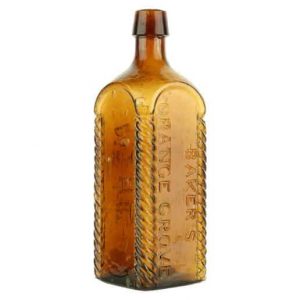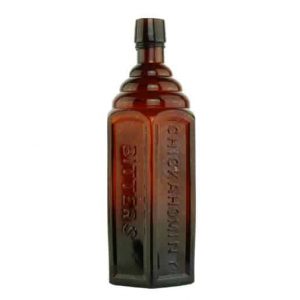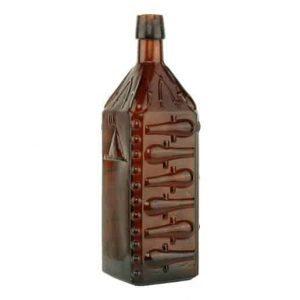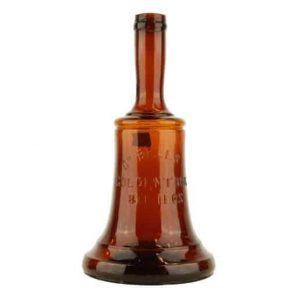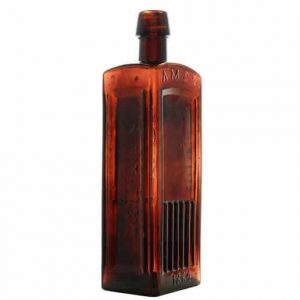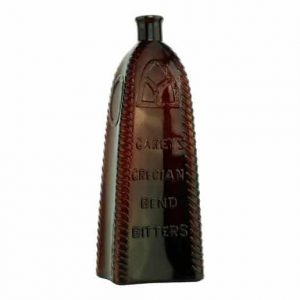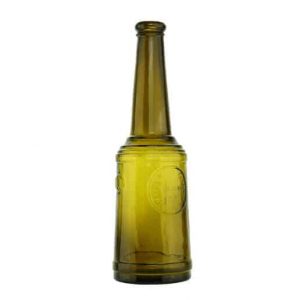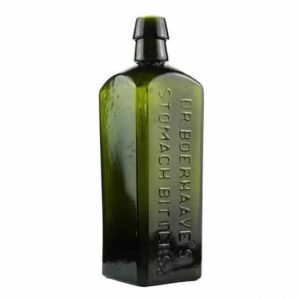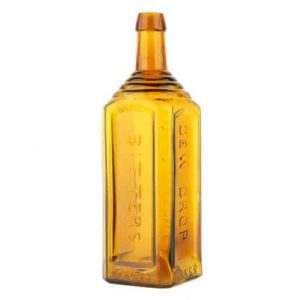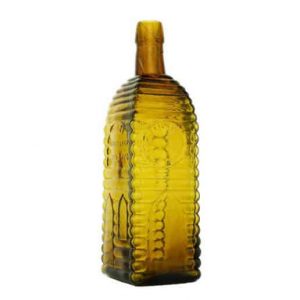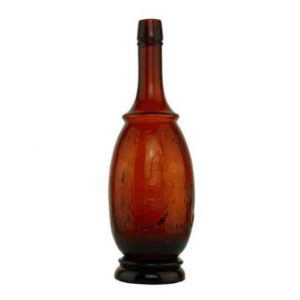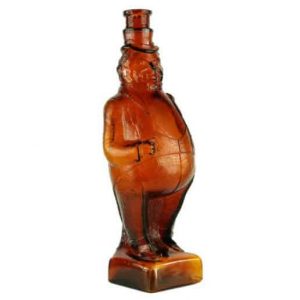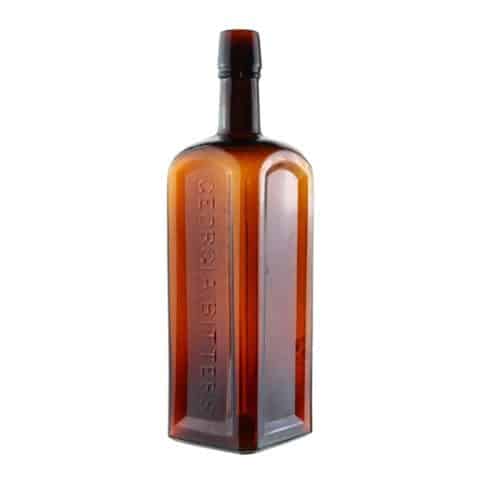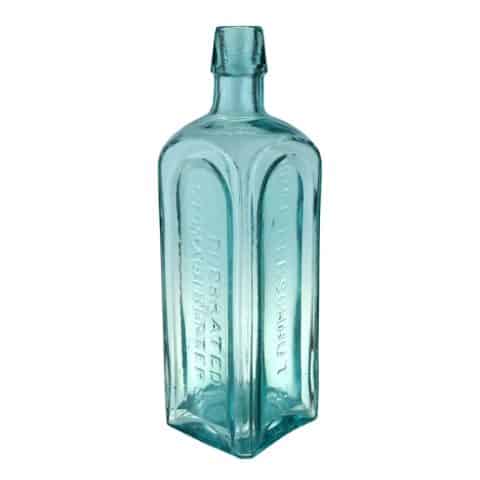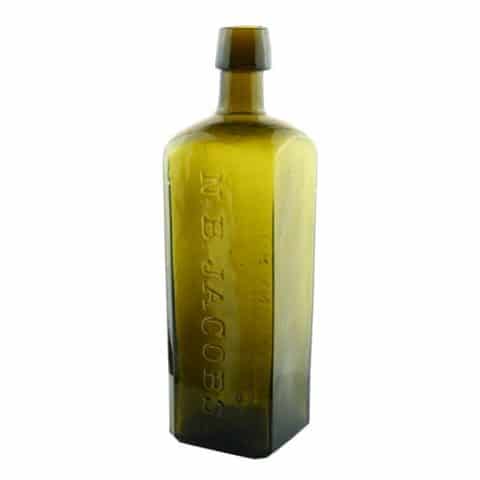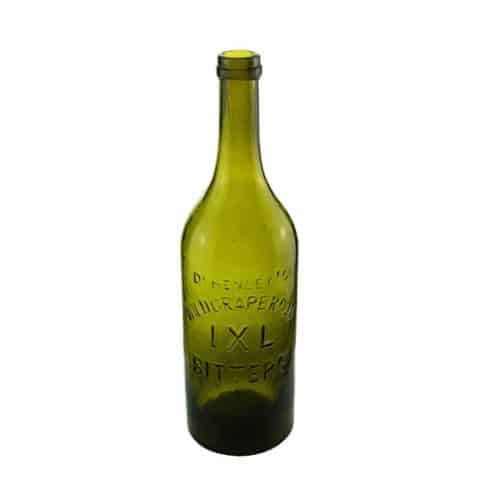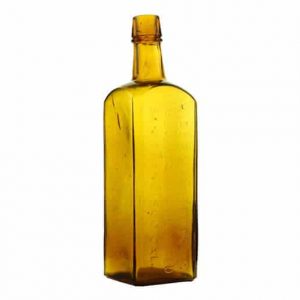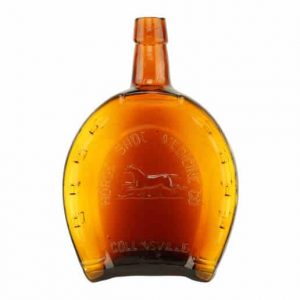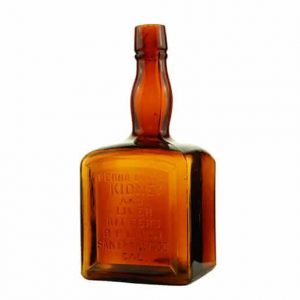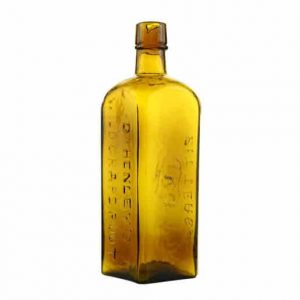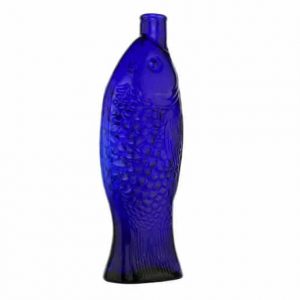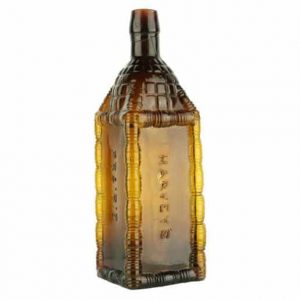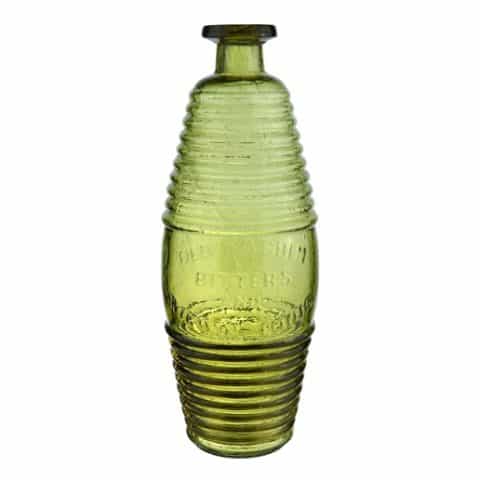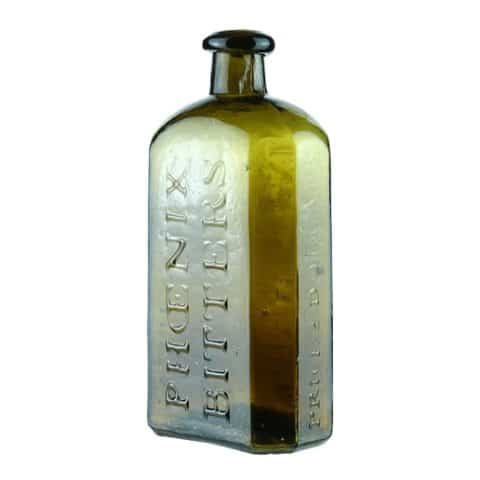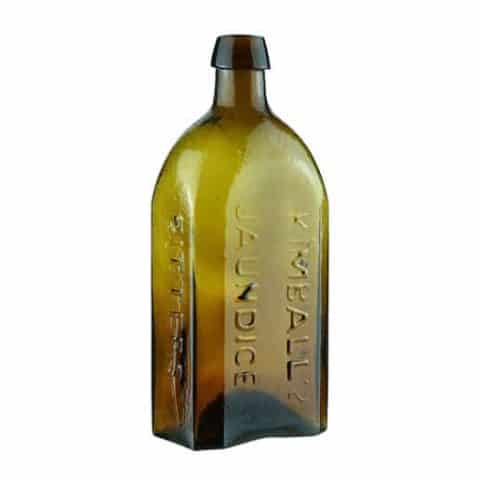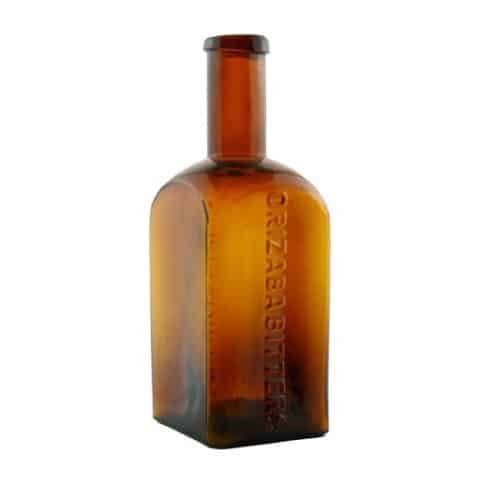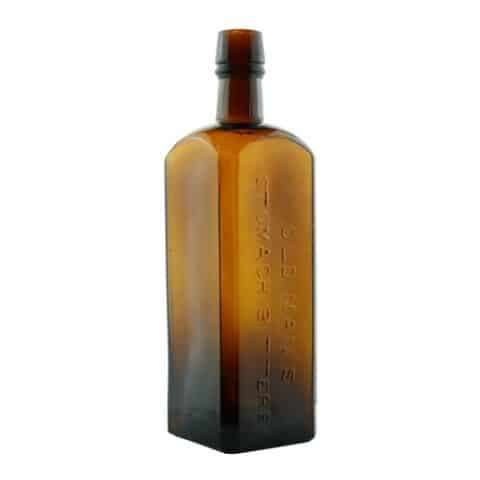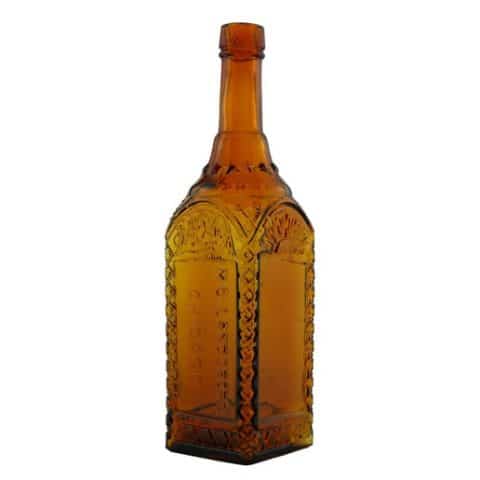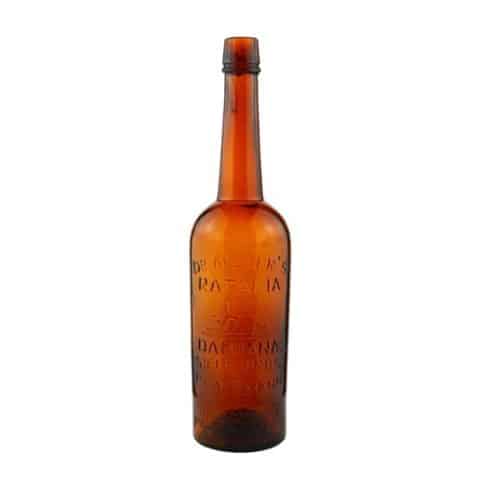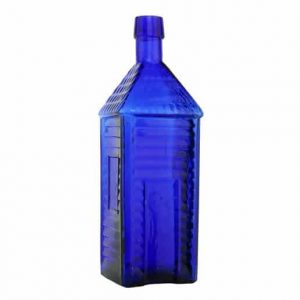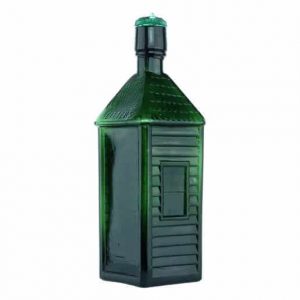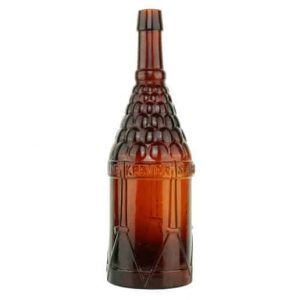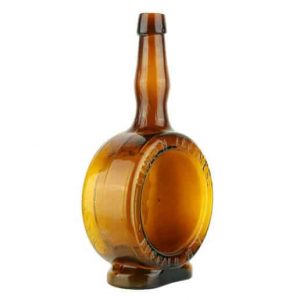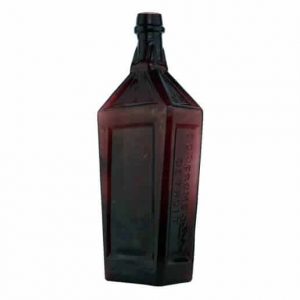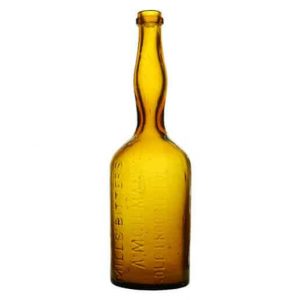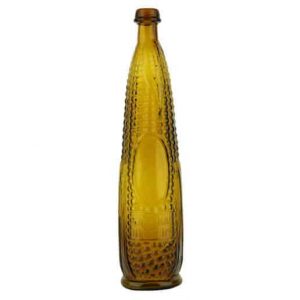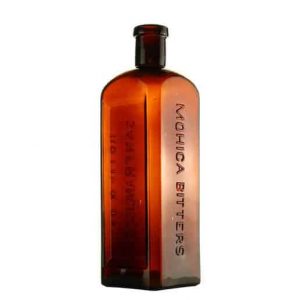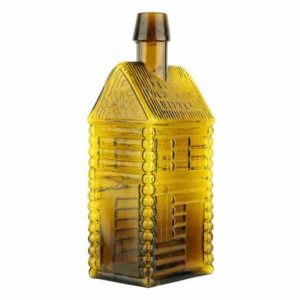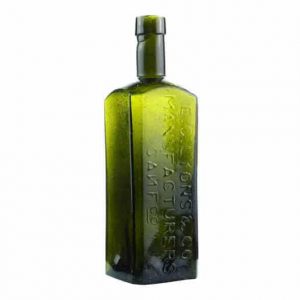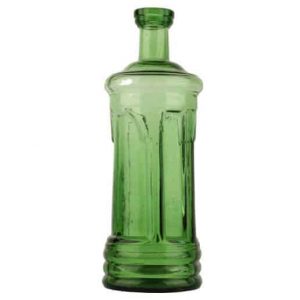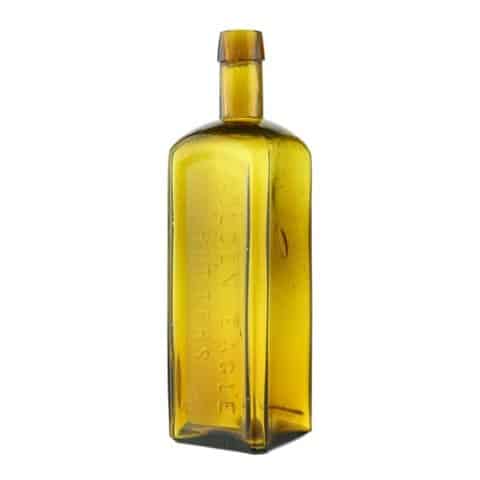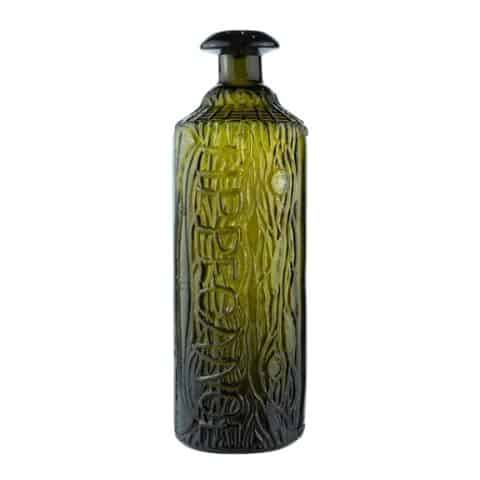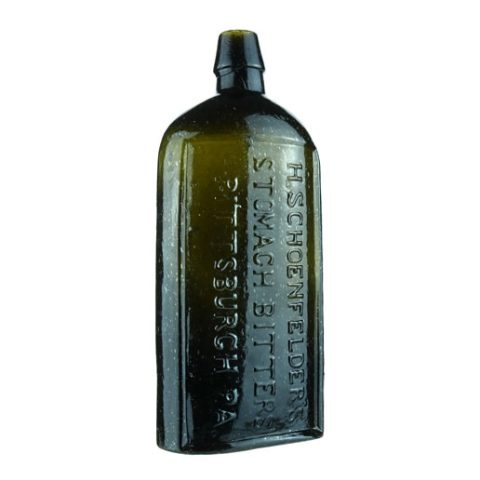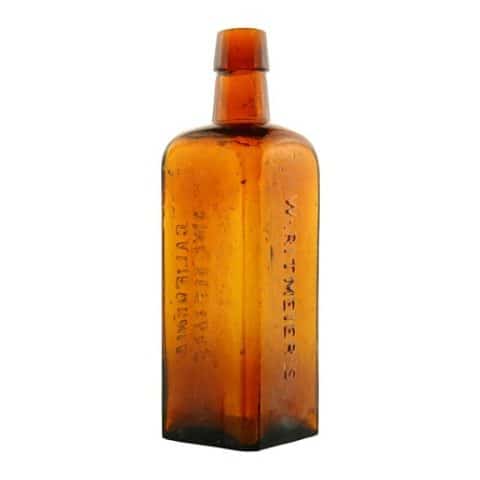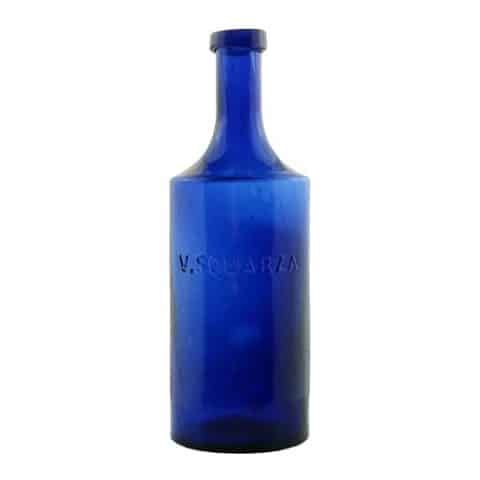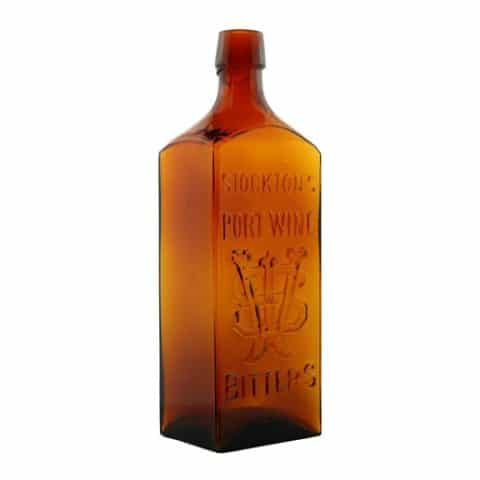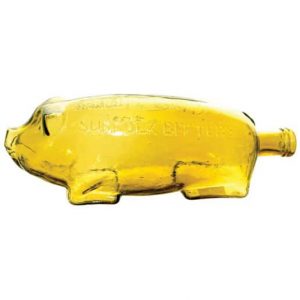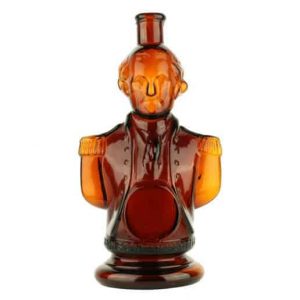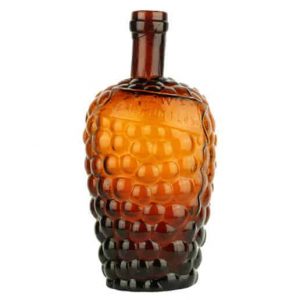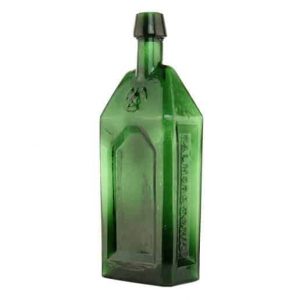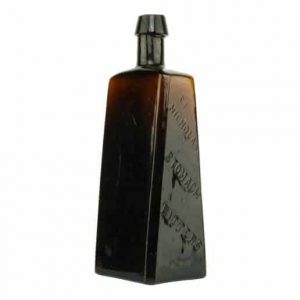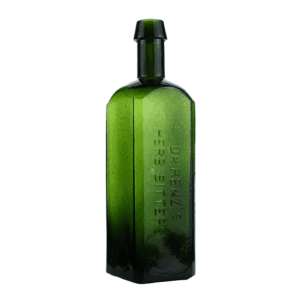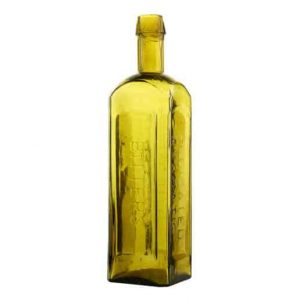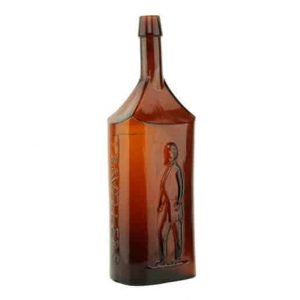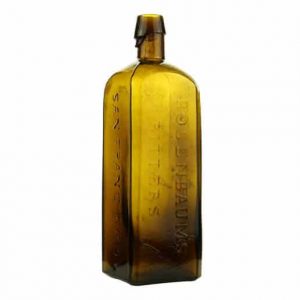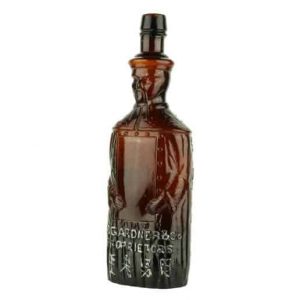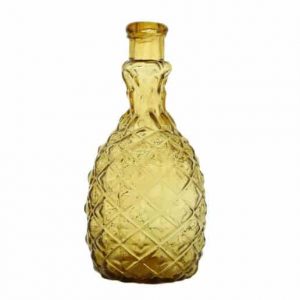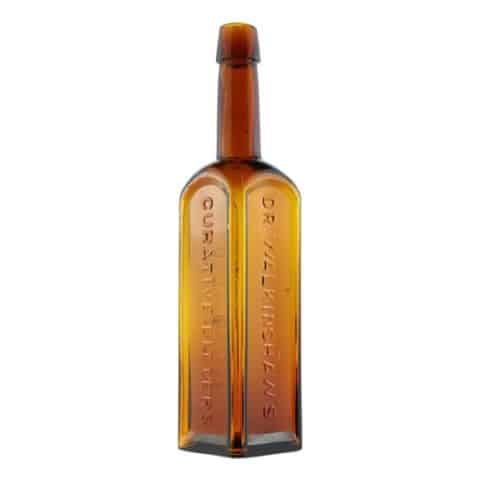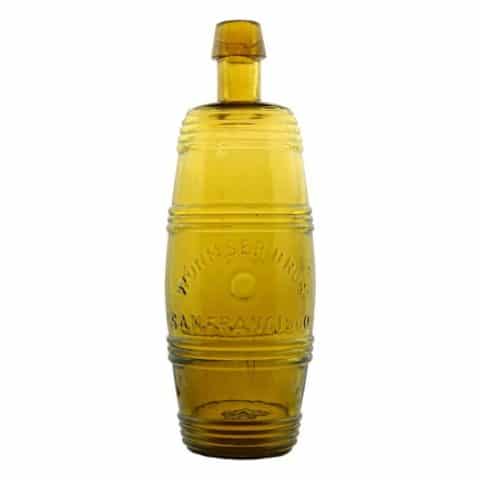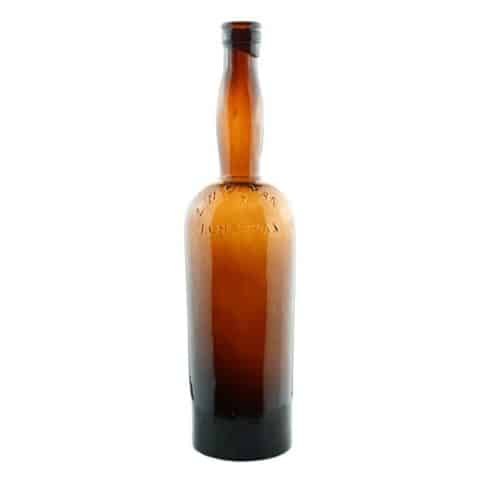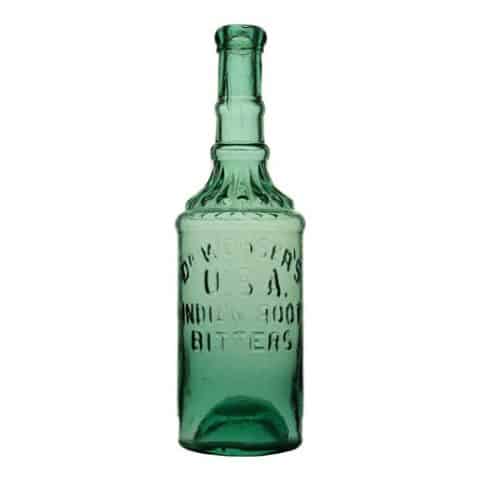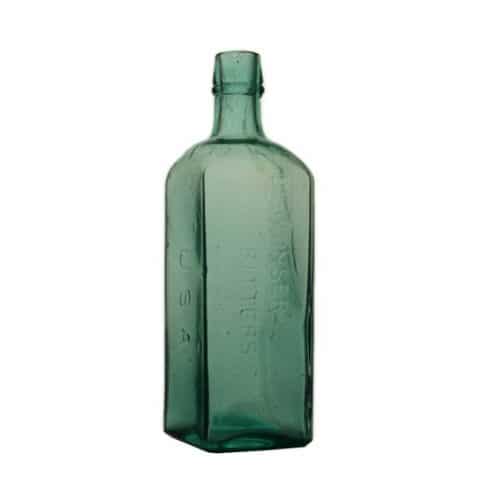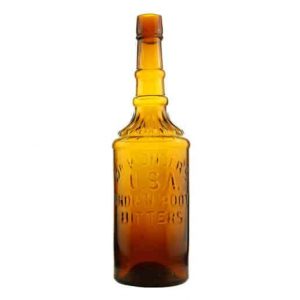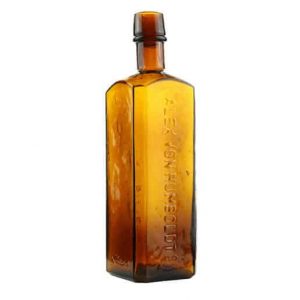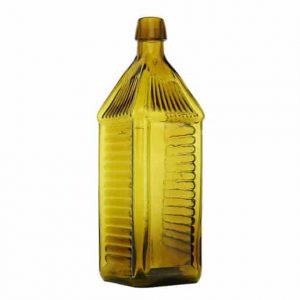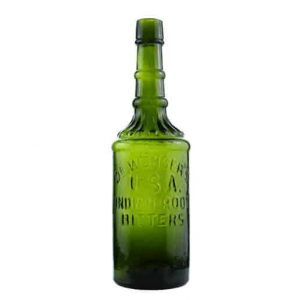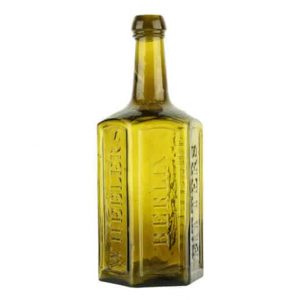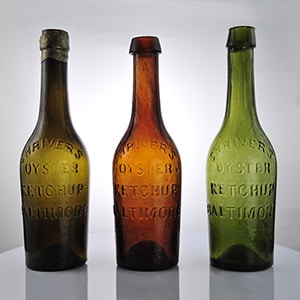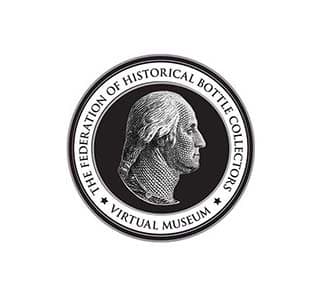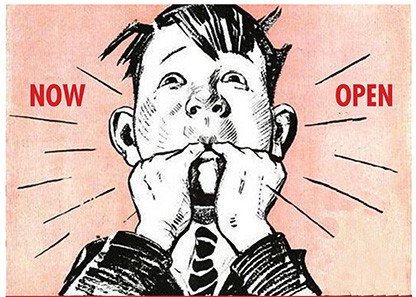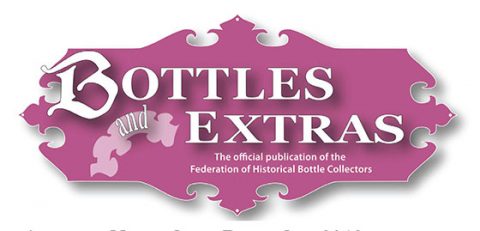Dr. Henley’s Wild Grape Root IXL Bitters – Square
Dr. Henley’s Wild Grape Root IXL Bitters
W. F. & Sons
H 86
L. Gross & Company, San Francisco, California
Golden Yellow Amber Square
Provenance: Richard T. Siri Collection
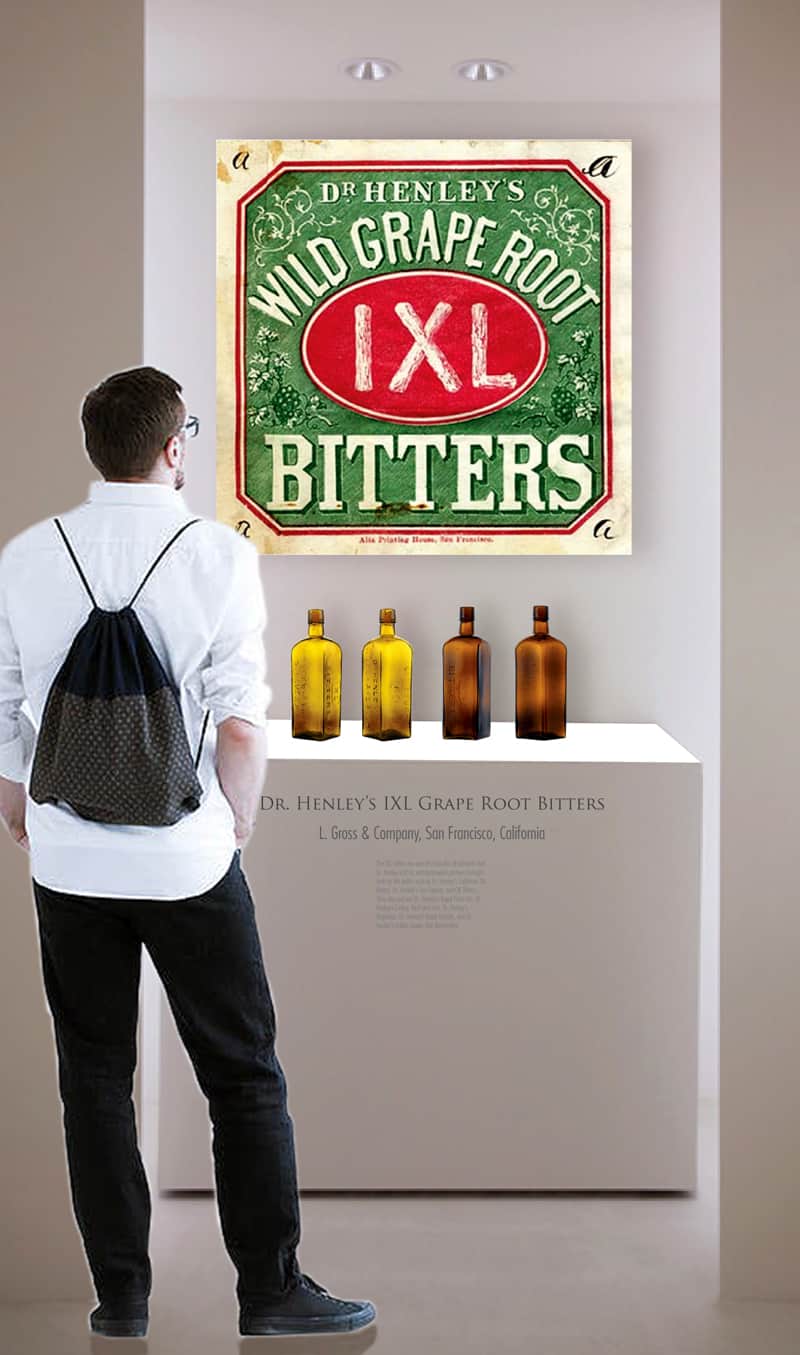
The first and oldest embossed bottles that contained Dr. Henley’s IXL Grape Root Bitters were square as shown in our museum example. The very rare bottles, when found, are usually amber so our example is especially exciting in this golden yellow-amber coloration. The bottle has an applied top and ring and is embossed W. F. & SONS on the base which stands for William Frank & Sons, Pittsburgh, Pennsylvania. It was not unusual for early western bottles to be made by east coast glass houses.
The square bottles were the predecessors of the round cylinder bottles that you typically see for the bitters. See the olive green Dr. Henley’s Wild Grape Root IXL Bitters cylinder in the museum.
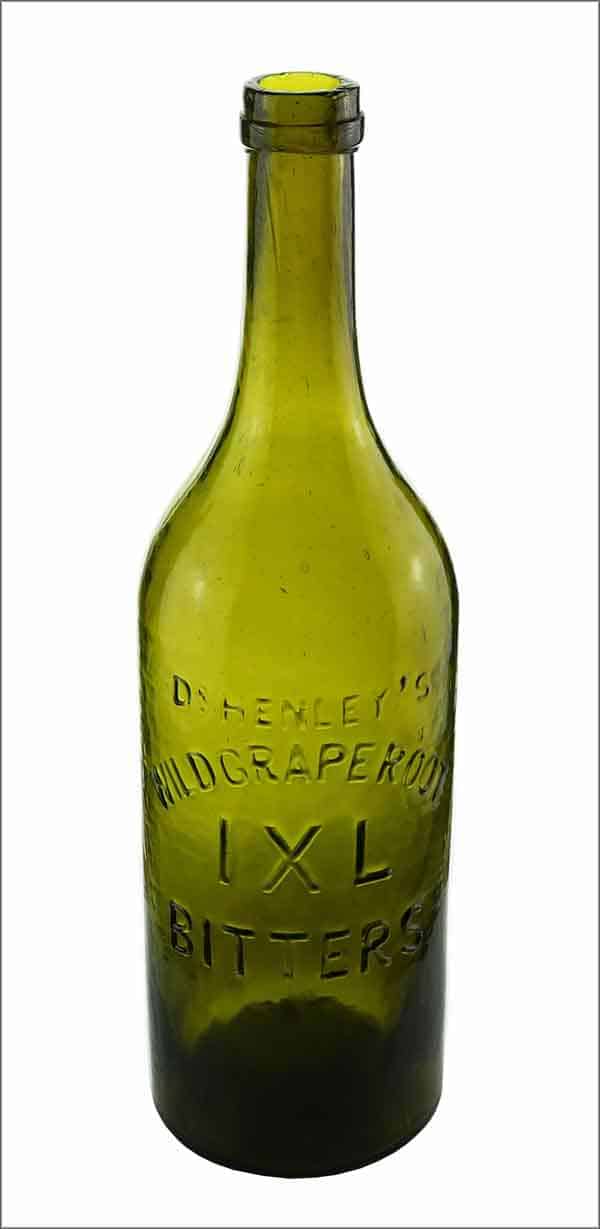
The IXL bitters are one of a handful of products that Dr. Henley and his entrepreneurial partners brought forth to the public such as Dr. Henley’s California IXL Bitters, Dr. Henley’s Eye Opener, and OK Bitters. They also put out Dr. Henley’s Royal Palm Gin, Dr. Henley’s Celery, Beef and Iron, Dr. Henley’s Regulator, Dr. Henley’s Royal Balsam, and Dr. Henley’s Indian Queen Hair Restorative.
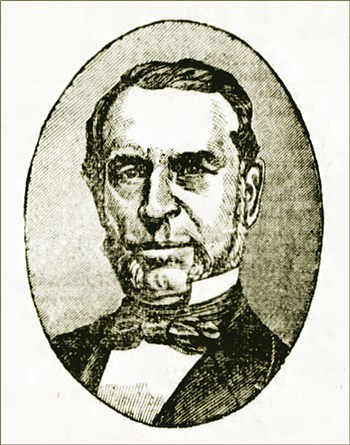
Dr. Henley’s Wild Grape Root IXL Bitters was first introduced to the public in 1868 by William Henley who was listed as a physician practicing and residing at the corner of Fifth and Jefferson in Portland, Oregon. In 1869, Henley and Louis Gross, an established Portland druggist, associated themselves with Henry Epstein who was a commission merchant in San Francisco with an office at 312 Sacramento. The trio started selling Dr. Henley’s Wild Grape Root IXL Bitters under the flag of L. Gross & Company at 518 Front Street in San Francisco. Louis Gross was now the manufacturer and sole proprietor of the IXL Bitters which were made from wild Oregon grape roots, among other herbs and spices.
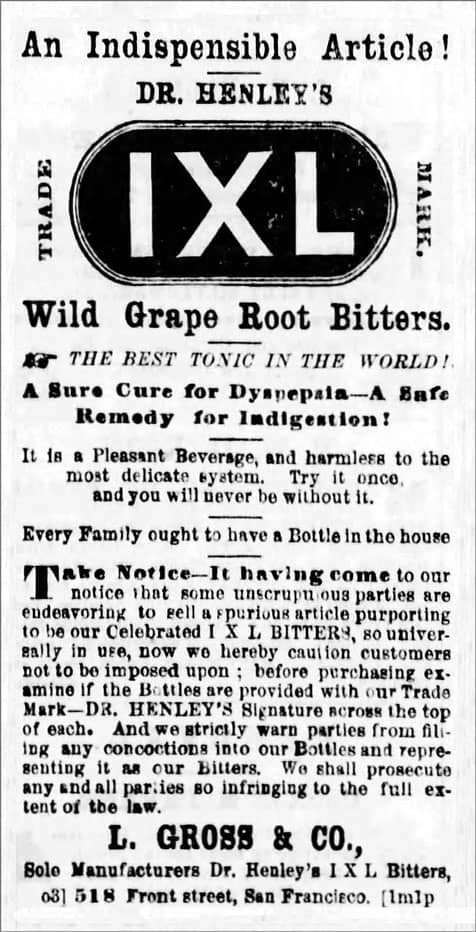
The monogram ‘IXL’ in a horizontal oval was their trade mark. Advertising said it was “An Indispensable Article!” and “The Best Tonic in the World!” The brand was so successful that it encouraged “unscrupulous parties” to put out competing products using the IXL name. Advertising asked you to look for Dr. Henley’s signature on the label of each bottle to assure you that you were not buying a counterfeit.
The Carlyn Ring and Bill Ham listings in Bitters Bottles is as follows:
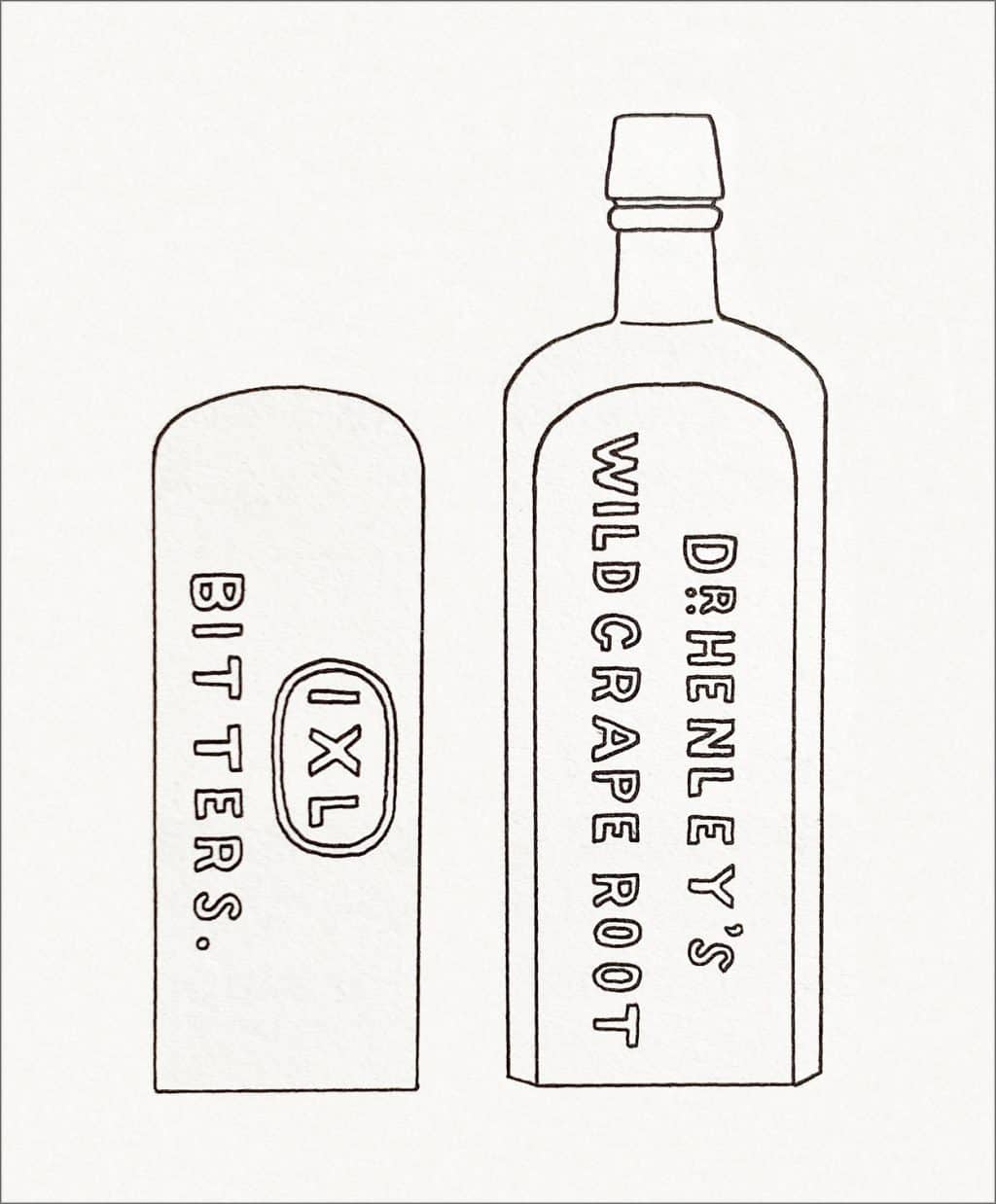
H 86 DR. HENLEY’S / WILD GRAPE ROOT // f // IXL in oval / BITTERS. // f // // b // W. F. & SONS
9 3/8 x 2 11/16 (6 ¾) ¼
Square, LTCR, Applied mouth, Amber, Very rare
Primary Image: Dr. Henley’s Wild Grape Root IXL Bitters imaged on location by the FOHBC Virtual Museum midwest studio led by Alan DeMaison.
Support: Reference to Bitters Bottles by Carlyn Ring and W. C. Ham. Use of Dr. Henley’s Wild Grape Root IXL Bitters illustration courtesy Bill Ham
Support Image: DR. HENLEY’S WILD GRAPE ROOT IXL BITTERS W.F. & SONS Applied top. We know that Henley had some of his bottles made in Pittsburgh by the William Frank Company. This example is one we don’t see often. We believe these were made for two years only, in 1880 and 1881. Another product Henley made using the Oregon Grape Root. These are considered quite rare and one of at least a few Henley bottles with the IXL. For someone trying to put together a complete collection of Henley bottles, this would be a nice addition. Not a ton of crudity but still showing the marks of an 1880’s bottle. A nice example otherwise grades an 8.5. – Jeff Wichmann, American Bottle Auctions, Auction 70, Part 2 of the Don Dwyer Collection
Support image: Amber Dr. Henley’s Wild Grape Root IXL Bitters example from American Bottle Auctions
Read: Use Dr. Henley’s Celebrated California IXL Bitters at Peachridge Glass.
Join the FOHBC: The Virtual Museum is a project of the Federation of Historical Bottle Collectors (FOHBC). To become a member.

